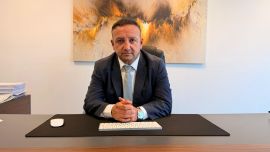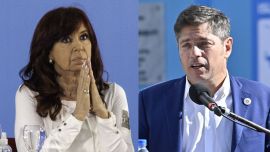The data slipped by almost unnoticed. Amid the crisis of the real economy and exchange rate wobbles, the multiple fierce battles being waged by President Javier Milei, the negotiations with the International Monetary Fund (IMF) and, ultimately, all eyes necessarily being on what’s to come, few stopped to analyse the information published by the INDEC national statistics bureau last week. This is explainable, as it was information about the past, a matter which these days does not arouse much interest. However, a reality which analysts ruled out has been confirmed.
In 2023, Argentina’s economy fell by 4.5 percent, with a 0.4-percent drop in December against November. Former president Alberto Fernández thus completed his four years in office with a nine-percent decrease in 2020 (during the Covid-19 pandemic), a 10.7-percent rise in 2021 and a five-percent rise in 2022. This would entail residual black numbers of little more than 3.3 percent in all; which implies something like a yearly rise of the economy by 0.5 percent, yet with a fall of the GDP per capita by 1.6 percent.
Or, measured in another way, four years of stagnation or a slight contraction of the economy in real terms. In conclusion, the country’s economy during Alberto Fernánde’s Presidency stayed in the same place. It even might have shown a slight slowdown.
Defenders of the former president will say that, given the circumstances, it was not that bad, given the effects of the pandemic, international crises and the suffocating internal political climate he had to experience.
Critics will talk of four lost years, no economic plan, fiscal mismanagement and the leaving of a ticking time bomb in financial, fiscal and monetary terms, with structural poverty above 40 percent.
Perhaps they all have a point. As usual, when assessing the economic performance of an entire presidential period. The truth is there is one inevitable conclusion: during the four years of Alberto Fernández’s administration, the economy did not grow. The country became stagnant. Four more lost years.
However, there is some consolation for the former head of state. His economic legacy is not far off what his two predecessors left in terms of results. Neither the last stage of Cristina Fernández de Kirchner’s government nor the Mauricio Macri administration produced great economic achievements. Rather the opposite, to the extent that it may be concluded, when analysing the growth curve and slowdowns of the economy, that Argentina has been in the same spot for exactly 12 years. According to official numbers, the total real growth over the 2011-2023 period was 0.8 percent – a virtual stagnation, with obvious rises and annual slowdowns.
To sum up, Argentina’s economy has not grown for 12 years, staying at the same level, even falling in real terms when measuring GDP per capita. There have been obvious fluctuations. such as a real rise of the GDP in 2017 (a record for the period with a GDP of US$642.6 billion) and a recovery of the economy in the post-pandemic period, but they were then destroyed by such negative years as 2018- 2019 or 2023.
What at times was rebuilt, was then lost. And, ultimately, it went back to the same place.
In hard numbers, in 2011 Argentina’s GDP was US$527.2 billion, whereas last financial year it closed with an increase of US$639 billion, with a GDP per capita from US$12,994 (in current dollars) to US$12,249.
Nothing. A country which does not grow, does not progress. Adjusted by the growth of the population (it grew by 16 percent), there was a 13-percent decrease. Practically the same ratio in the jump of poverty from a structural level of 30 to a new floor of 40 percent, today also nearing 50 percent.
by Carlos Burgueño*




















Comments